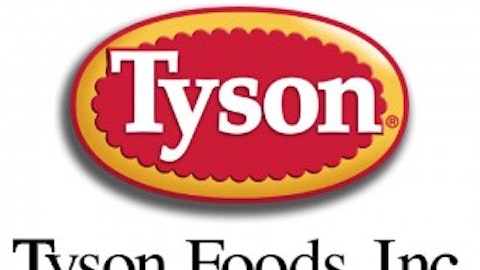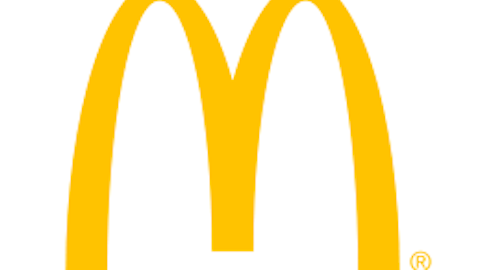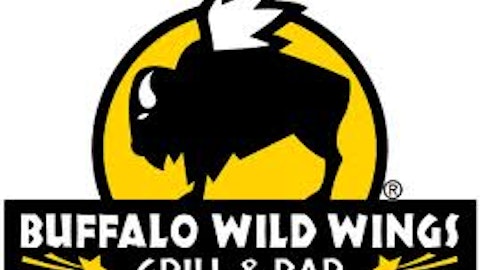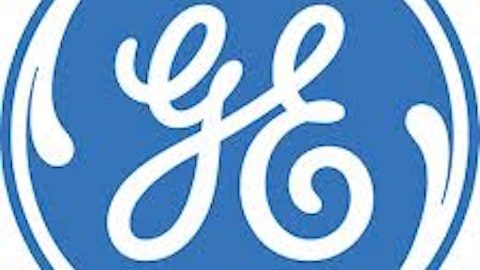With more than 38,000 restaurants in 120 countries, Yum! Brands, Inc. (NYSE:YUM) is the world’s biggest fast food company in terms of units. YUM owns the biggest brands in the world including KFC, Taco Bell, Pizza Hut, and WingStreet restaurants.
YUM’s 4Q12 Earnings
Recently, YUM announced its earnings for 4Q12. YUM reported earnings’ increase of 13% which is the 11th time it has exceeded its annual target of at least 10%. The company reported earnings per share of $0.83; analysts had predicted an EPS of $0.82. Revenues stood at $4.15 billion, slightly beating the estimates of $4.12 billion. Same store sales increased by 5%, margins grew by 4 points while operating income was up 13%. Income was up in all three major brands, with KFC and Taco Bell making significant profits.
United States
In the U.S, same store sales were up 3% while the sales growth and margins improved by 3%. In 4Q12, same store sales grew by 5% for Taco Bell whereas the margins were up by 2%. In the U.S, Taco Bell sold 325 million Doritos and Locos Tacos. Moreover, in case of Pizza Hut, 100 net new units were added in 4Q12 while Taco Bell was increased by 15 units.
YUM Restaurants International
In 2012, YUM opened more than 2000 stores outside the United States. During 4Q12, 473 new restaurants were opened which included 309 new units in the emerging markets. In Europe and Japan, same store sales remained flat while the rest of the YRI portfolio grew by 3%. The company did really well in Africa, Russia, and Thailand; while Pizza Hut had a great year in Korea, where its operating income grew by 15%.
Poultry Issues in China
As far as the international markets are concerned, China’s recent poultry issue still remained the center of attention for all investors. On December 18, Chinese Central Television (CCTV) aired a program which was linked to the KFC. It showed that some of the poultry farmers were using excessive levels of antibiotics in chicken. Unfortunately, some of this product was purchased by KFC China’s poultry suppliers. As a result, customers in China lost confidence in KFC and its same-store sales dropped by 6% in 4Q12.
Valuation
YUM is trading at a forward P/E (1yr) of 16.90x and has a PEG of 1.64. Incorporating a dividend yield of 2.20% in its PEG, we get to a PEGY of 1.38. We can value YUM by using an industry P/E of 22x. However, as the current poultry issues in China are still fresh on the minds of Chinese consumers, we would value YUM by using a discount of 15%. Hence, earnings multiple of 18.7x would be used.

According to the consensus estimates, YUM’s value comes out to be $70.31. Currently, YUM is trading at $63.51 in the market; hence, it still has an upside potential of almost 11%. Adding a dividend yield of 2.20% in this gives us a total return of 13%. In short, despite the recent issues in China, YUM remains a strong buy.
The Restaurant Industry
Just like YUM, its biggest rival, McDonald’s Corporation (NYSE:MCD) , didn’t have a flawless 2012. In the third quarter of 2012, sales at restaurants open at least a year fell 2.2% in the U.S. and Europe; while in Asia, Middle East and Africa, it fell by 2.4%. However, in the fourth quarter, it was up by a mere 0.1%. Despite the fact that the restaurant industry isn’t expected to do that well in 2013 amid economic downturn, McDonald’s is still hopeful that its renewed menus will drive significant amount of sales this year. With KFC facing severe criticism in China, McDonald’s has a great opportunity to grab a lion’s share in the fast food industry. You can have a further look at my analysis on McDonald’s here.
As the restaurant industry gets bigger day by day, giants like YUM and MCD are facing tough competition from peers such as The Wendy’s Company (NASDAQ:WEN), Burger King Worldwide Inc (NYSE:BKW) and Chipotle Mexican Grill, Inc. (NYSE:CMG). Wendy’s and Burger King have been performing really well lately, but their stocks aren’t that attractive. Same is the case with CMG, which has shown a lot of promise lately, but it seems to be a very risky investment. Plus, it’s one of the most expensive buys in the restaurant industry at this moment – a forward P/E (1yr) of 30.98x is a testimony to this. At a forward P/E (1yr) of 25.07x and a mean recommendation of 2.9 on the sell side, Wendy’s also remains an expensive buy. Same can be said about Burger King, which has a forward P/E (1yr) of 23.37x and a mean recommendation of 2.6 on the sell side; hence, not as attractive as MCD and YUM.
Conclusion
China still accounts for more than 40% of YUM’s revenues; hence, it’s the foremost important market for the fast food chain. Due to the recent poultry issue in China, YUM has suffered a huge setback. The million dollar question is when will the company recover from this adverse publicity in China? In 2005, the company faced a similar sort of issue when its business in China was affected by avian flu and Sudan Red. As a result, same store sales were down by more than 40% while the operating income for the year decreased by 5%. The company still managed to increase its sales by 28% while the profits were up by 47% in 2006.
YUM has already announced that its 1Q13 earnings would be severely affected by the recent poultry issue in China. Moreover, it would also have an effect to some extent on the company’s sales in 2Q13. This means that the company won’t have much cash on hand during the first six months of 2013; hence, this could have an effect on its long term strategy of increasing its dividends. Further, with a fierce competitor such as MCD, things could become worse. Therefore, the next six months look bleak for the company. Therefore, we remain neutral on YUM in the short run. However, when you are as big as YUM, these issues just come and go. Moreover, when you have “immortal” brands like KFC and Pizza Hut in your bag, you just need to be patient before it starts to happen once again for you. In this case as well, time would be the eventual healer. Even an industry discount of 15% (used in our valuation above) makes it a great buy for the long run. Therefore, we recommend it for the long run.
The article The Immortal Brand Is Here for Good originally appeared on Fool.com and is written by Waqar Saif.
Copyright © 1995 – 2013 The Motley Fool, LLC. All rights reserved. The Motley Fool has a disclosure policy.




